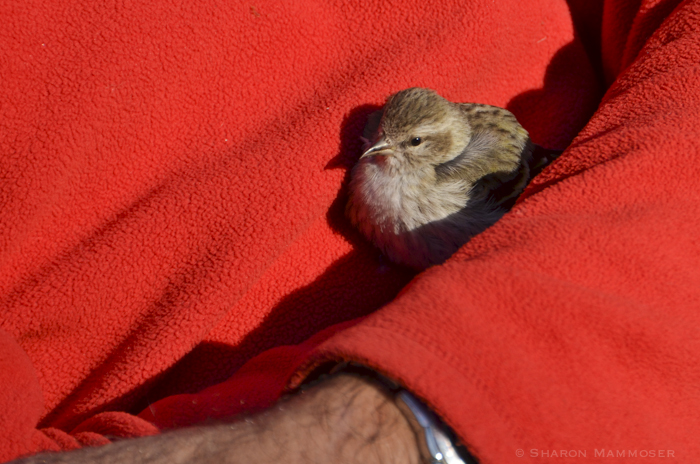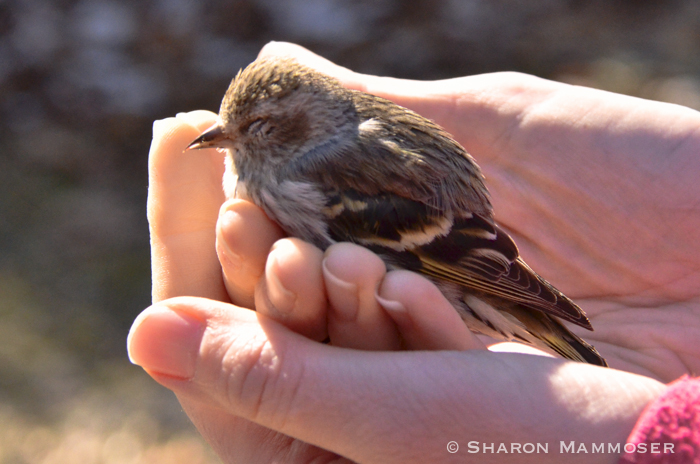 The answer to last week’s puzzler is a Pine Siskin. Until recently, I was confusing this bird with a gold finch in winter plumage. Pine Siskins gather in flocks and often hang out with other finches, including the gold finch. Both are the same size and have yellow on their wings, but pine siskins have streaking on their breast. Pine siskins have unpredictable movements, called irruptions, which may mean they are present one year, and then absent the next.
The answer to last week’s puzzler is a Pine Siskin. Until recently, I was confusing this bird with a gold finch in winter plumage. Pine Siskins gather in flocks and often hang out with other finches, including the gold finch. Both are the same size and have yellow on their wings, but pine siskins have streaking on their breast. Pine siskins have unpredictable movements, called irruptions, which may mean they are present one year, and then absent the next.
This year, at my house in western North Carolina, we have been seeing large flocks at our feeders daily, eating black oil sunflower seeds. Many sit on the ground to feed and seem to be frightened easily, bursting from the ground in a whirl of wings. After several had collisions with some windows in our sun room, we moved the feeder further from the house and this has solved the problem. Click here if you want to know what you can do for a stunned bird that has hit your window.
According to the Cornell Lab of Ornithology, “Pine Siskins get through cold nights by ramping up their metabolic rates—typically 40% higher than a “normal” songbird of their size. When temperatures plunge as low as –70°C (–94°F), they can accelerate that rate up to five times normal for several hours. They also put on half again as much winter fat as their Common Redpoll and American Goldfinch relatives.” Another cool fact I learned from the Ornithology website is that they ” can temporarily store seeds totaling as much as 10% of their body mass in a part of their esophagus called the crop. The energy in that amount of food could get them through 5–6 nighttime hours of subzero temperatures.”
Are you feeding the birds this winter? Have you had any exciting sightings or wild encounters? If so, I’d love to hear about them… you can always comment using the box below the posts…
Happy bird watching! Here is the next weekly puzzler.

